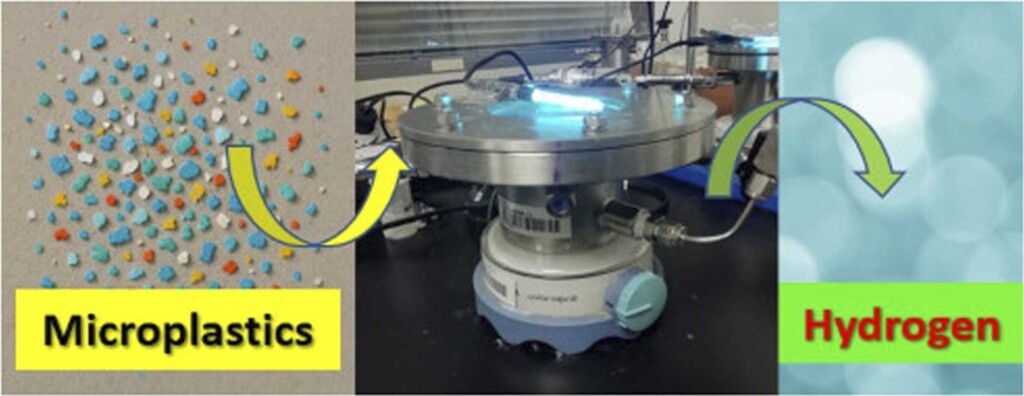Vědci navrhli proces pro rozklad mikroplastů a výrobu vodíku v jednom
Jak bojovat s rostoucím problémem plastového znečištění a zároveň vyrábět čistou energii? Vědci z VŠB-TUO ve spolupráci s dalšími kolegy nabízí možné řešení v podobě světlem řízeného procesu zvaného fotoreformace, při kterém dochází k rozkladu mikroplastů za vzniku vodíku – bezemisního a obnovitelného paliva. Výsledky základního výzkumu, které vědci chtějí převést do technologií využitelných v praxi, publikoval odborný časopis Journal of Environmental Chemical Engineering.
Plastový odpad je všude kolem nás, znečišťuje oceány i krajinu a rozpadá se na drobné částice zvané mikroplasty. Tyto částice se dnes nacházejí ve vodě, v ovzduší, půdě, živých organismech a dokonce i v lidském těle.
„Podle úsloví „Trash to Treasure“ jsme proto vyvinuli postup, jak přeměnit mikroplasty na vodík jakožto ekologické palivo budoucnosti. Tento proces se nazývá fotoreformace a využívá světla k rozkladu plastových mikročástic za přítomnosti vhodných fotokatalyzátorů. Studie tak nabízí nejen praktické řešení pro recyklaci mikroplastů, ale také nový zdroj obnovitelné energie. V době rostoucí potřeby udržitelných zdrojů energie a snižování emisí skleníkových plynů jde o příspěvek, který má velký potenciál pro budoucnost,“ uvedl první autor článku Petr Praus z Institutu environmentálních technologií CEET.

Výzkumníci pracovali s běžnými typy plastů – PET (polyethylentereftalát) a PLA (polylaktid), aby přiblížili experiment reálným podmínkám. „Testovali jsme a porovnávali účinnost dvou levných, netoxických a snadno dostupných fotokatalyzátorů – oxidu titaničitého a grafitického nitridu uhlíku. Výzkum prokázal, že zejména ve vodném prostředí je možné dosáhnout vysoké výtěžnosti vodíku, přičemž oxid titaničitý dosahoval velmi slibných výsledků,“ doplnil Praus. Součástí studie byla i termodynamická analýza a testování stability katalyzátorů, což je zásadní pro případné budoucí praktické využití této technologie.
Výzkum se uskutečnil v rámci řešení projektů REFRESH a DMS INOVO a s podporou Velké výzkumné infrastruktury ENREGAT.